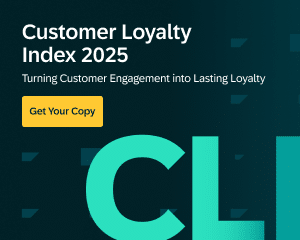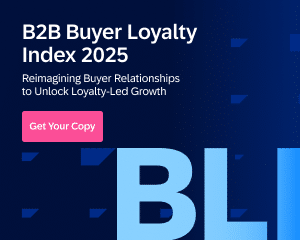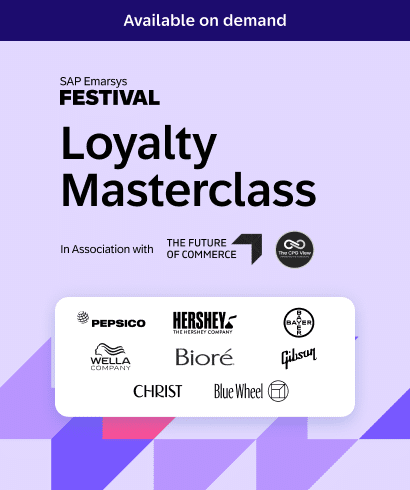The D2C landscape is evolving fast—and in 2025, only the most adaptable brands will thrive. Whether you’re a seasoned marketer or new to the space, the pressure to deliver seamless, personalized experiences across every channel is higher than ever.
With more CPG brands shifting to D2C and digital expectations growing, the rules of engagement are changing. But amid the noise, real opportunities are emerging.
In this article, we’ll break down the most important D2C trends for 2025—so you can focus on what truly moves the needle: smarter use of data, better technology, and more meaningful customer relationships.
The State of the D2C Industry
The direct-to-consumer (D2C) industry is experiencing explosive growth. According to DataHorizon Research, the global D2C e-commerce market reached $162.91 billion in 2024 and is projected to soar to $595.19 billion by 2033.
What’s fueling this acceleration? Shifting consumer expectations, rapid advancements in digital technology, and the proliferation of online channels are creating fertile ground for D2C expansion. Some markets are growing faster than others—India, for example, is poised to triple its D2C market size compared to 2020. With increased internet access, smartphone adoption, and a growing middle class, India’s D2C market is on track to hit $100 billion by the end of 2025, with some estimates predicting $300 billion by 2030.
At the same time, traditional CPG brands are leaning into D2C strategies to strengthen customer relationships and gain better access to first-party data. By owning the customer journey end-to-end, these brands are unlocking deeper insights and delivering more personalized, effective marketing experiences.
8 D2C Marketing Trends for 2025
The direct-to-consumer model empowers brands to build stronger, data-driven relationships with their customers—but only if they stay ahead of shifting expectations.
To succeed in 2025, D2C brands are doubling down on innovation, agility, and customer-centric strategies. Here are eight key trends defining the next phase of D2C growth and how leading brands are already putting them to work.
1. Hyper-personalization powered by AI and advanced analytics
Basic personalization is no longer enough. In 2025, leading D2C brands are embracing hyper-personalization—using AI and machine learning to deliver highly tailored experiences based on real-time behavior, preferences, and purchase history.
By combining first-party data with predictive analytics, marketers can dynamically adjust content, offers, and product recommendations at scale, turning every interaction into a moment of meaningful connection.
2. Blending video commerce with immersive “phygital” experiences
The line between digital and physical shopping is disappearing—and D2C brands are capitalizing on it. “Phygital” experiences combine the convenience of e-commerce with the engagement of in-store interactions, creating seamless, hybrid journeys.
One rising tactic: video commerce. From livestream product demos to shoppable videos on social media, video content is driving deeper engagement and conversion by bringing the shopping experience to life in real time.
3. Driving retention with subscription-based models
D2C brands are increasingly adopting subscription models to boost customer lifetime value and stabilize revenue. Subscriptions offer convenience and predictability for consumers—while giving brands a reliable stream of income and more opportunities to nurture long-term loyalty.
From replenishable products to curated experiences, subscriptions help transform one-time buyers into repeat customers.
4. Enhancing customer intelligence with AI-driven profiles
AI and data analytics are transforming how D2C brands understand their customers—creating rich, dynamic profiles that reveal not just what people buy, but why they buy.
By analyzing browsing behavior, purchase history, and engagement patterns, brands can refine segmentation, predict intent, and deliver hyper-relevant messaging at scale. The result? Smarter targeting, stronger personalization, and more meaningful customer experiences.
5. Forecasting customer behavior with predictive analytics
Predictive analytics gives D2C brands a competitive edge by transforming historical data into forward-looking insights. With the ability to anticipate customer behavior, brands can make smarter decisions around product demand, personalization, and retention strategies.
For example, The Luxury Closet—an online marketplace for pre-loved luxury goods—analyzes customer data from multiple angles to better understand and forecast shopping patterns. This proactive approach helps them stay ahead of customer needs and optimize marketing performance in real time.
“We actually recently launched a [...] powerful campaign… analyzing data through different angles that can allow us to have the opportunity to mirror shopping behaviors, even anticipate shopping behaviors.”
6. Unlocking better engagement with first-party data
First-party data is one of the most valuable assets for D2C brands in 2025. It enables deeper personalization, more relevant campaigns, and stronger customer relationships—all without traditional reliance on third-party cookies.
Leading brands are expanding their data strategies by creating more interactive touchpoints: loyalty programs, preference centers, quizzes, and post-purchase feedback loops. But as data collection increases, so does the responsibility to handle it transparently. Staying compliant with evolving privacy regulations is key to building trust and maintaining long-term engagement.
7. Prioritizing owned channels to reduce reliance on third-party platforms
With acquisition costs climbing and privacy regulations evolving, D2C brands are doubling down on owned channels like email, SMS, and mobile apps. These platforms give marketers greater control over messaging, better margins, and direct access to first-party data.
By investing in owned channels, brands can build more durable customer relationships, reduce dependency on paid media, and deliver personalized experiences that drive retention and repeat revenue.
8. Building community through content and co-creation
In 2025, D2C brands are leaning into community as a core growth strategy. By encouraging user-generated content, launching ambassador programs, and creating interactive campaigns, marketers are finding new ways to deepen engagement and increase brand loyalty.
This two-way approach turns customers into collaborators—driving connection, fueling word-of-mouth, and reinforcing long-term brand affinity.
“What we've realized is, although loyalty is great, taking that to the next level and really activating and driving those customers to become brand advocates is so key to growth… In year one of working with Mention Me, we saw 10% of new customers come through referrals… Last year we saw nearly 20% of new customers come through referrals, which was driven by 22% of our customers referring.”
D2C Case Study: How Kellanova Drives Growth by Focusing on the Consumer
Kellanova, a global leader in snacking, puts consumers at the heart of everything they do. With the goal of becoming their industry’s best-performing brand, Kellanova’s marketing team aims to excel through consumer data and personalized experiences.
Challenge
Before partnering with Emarsys, Kellanova struggled to create dynamic and personalized experiences that evolved with their consumers’ journeys. But they knew there had to be a better way.
Solution
Kellanova implemented an AI-powered D2C strategy to deepen their consumer insights. Their team started collecting, unifying, and analyzing trusted consumer data with AI, which empowered them to build and deliver hyper-personalized experiences for buyers.
By creating playbooks and best practices, Kellanova also equips its marketers to collect first-party data responsibly across all their channels and touchpoints.
Results
The secret to their sustained success? Basing every D2C marketing decision on their consumers’ needs.
Going forwards, Kellanova wants to reinforce their position as a market leader by continuing to refine their consumer insights and engagement strategies.
“Our North Star is to put people at the center of sustainable brand growth by harnessing a variety of trusted and unified consumer data.”
What’s Next for D2C Marketing?
Without a doubt, the future of D2C marketing will continue being shaped by new technologies and shifts in consumer expectations.
Here’s what you can expect to see:
- AI-powered approaches to CX: Integrating AI into customer experience (CX) strategies will increase in popularity. Especially once more D2C marketers realize how balancing technology and common connection can hyper-personalize interactions. Analyzing consumer data with AI can also help brands to mirror or anticipate shopping behaviors.
- Sustainable and ethical practices: Going green is an evergreen trend in e-commerce. Brands are predicted to increase their focus on promoting sustainability, through initiatives like reduced packaging and ethical practices.
- Omnichannel optimization: Future-proofing your brand’s success means unifying your D2C marketing strategy across all channels and touchpoints. Companies that champion this goal will create more cohesive customer journeys and put people at the center of sustainable brand growth.
Conclusion: Embracing the Future of D2C Marketing
With global ecommerce sales thought to reach $7.4 trillion by 2025, direct-to-consumer marketers can’t afford to fall behind. Success will belong to brands that can convert the opportunities offered by technology into genuine, human connections with consumers.
By embracing hyper-personalization, data analytics, and emerging platforms and solutions, you can create compelling customer experiences that drive growth and loyalty. To stay ahead, remember to be agile, keep innovating, and always put the customer at the center of all strategies.
Want to explore how these D2C trends can transform your marketing approach? Reach to Emarsys for a demo of our AI-powered customer engagement platform.







